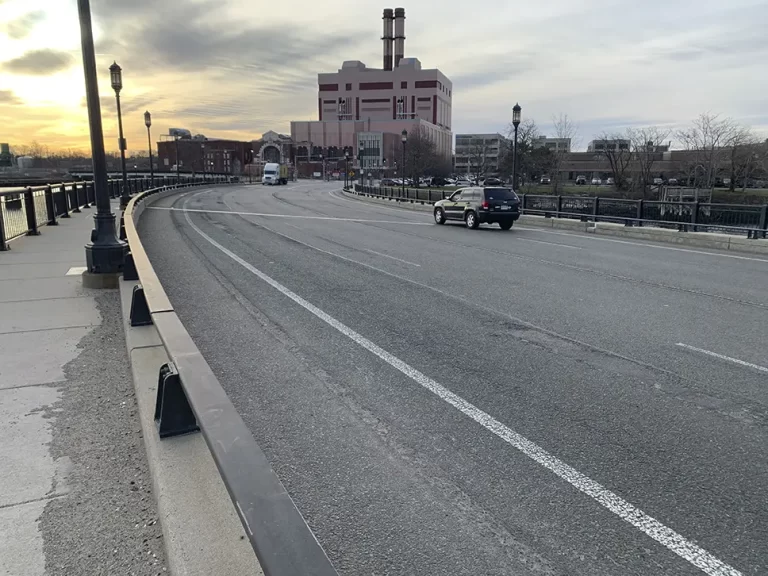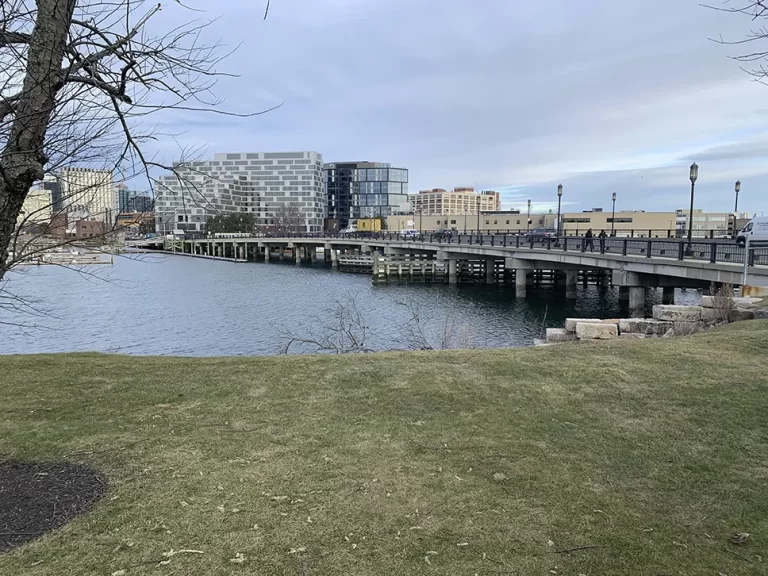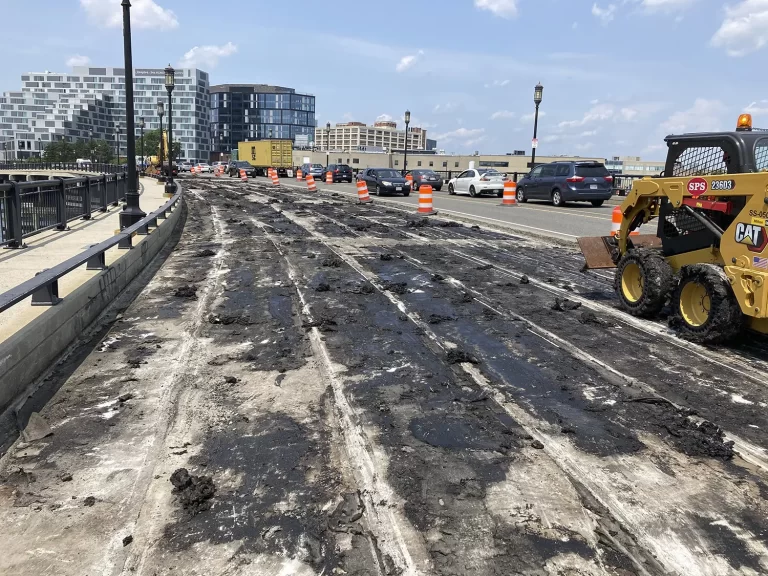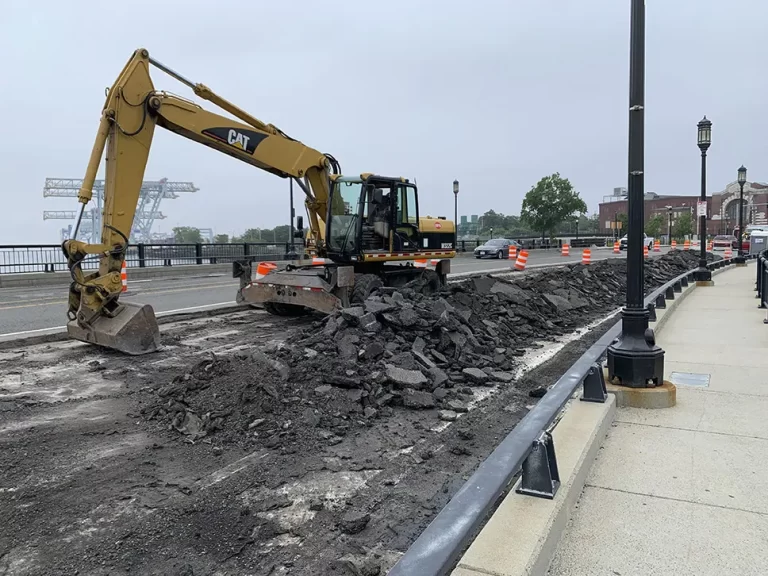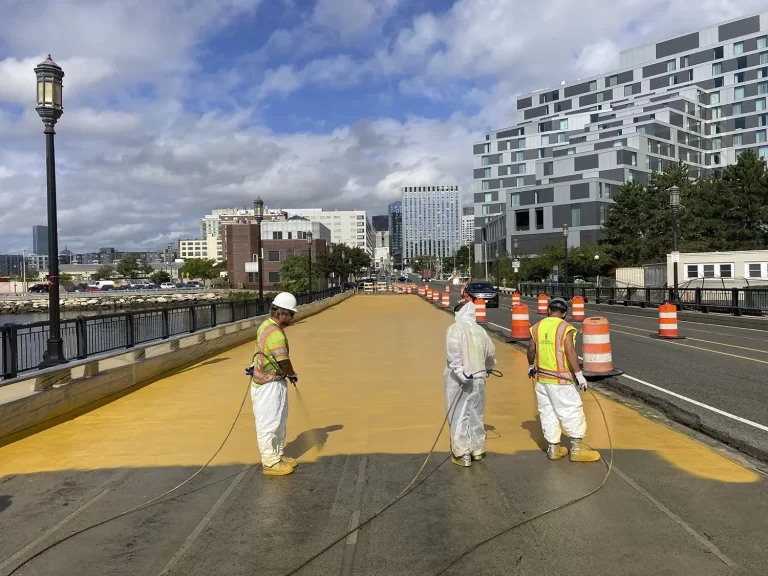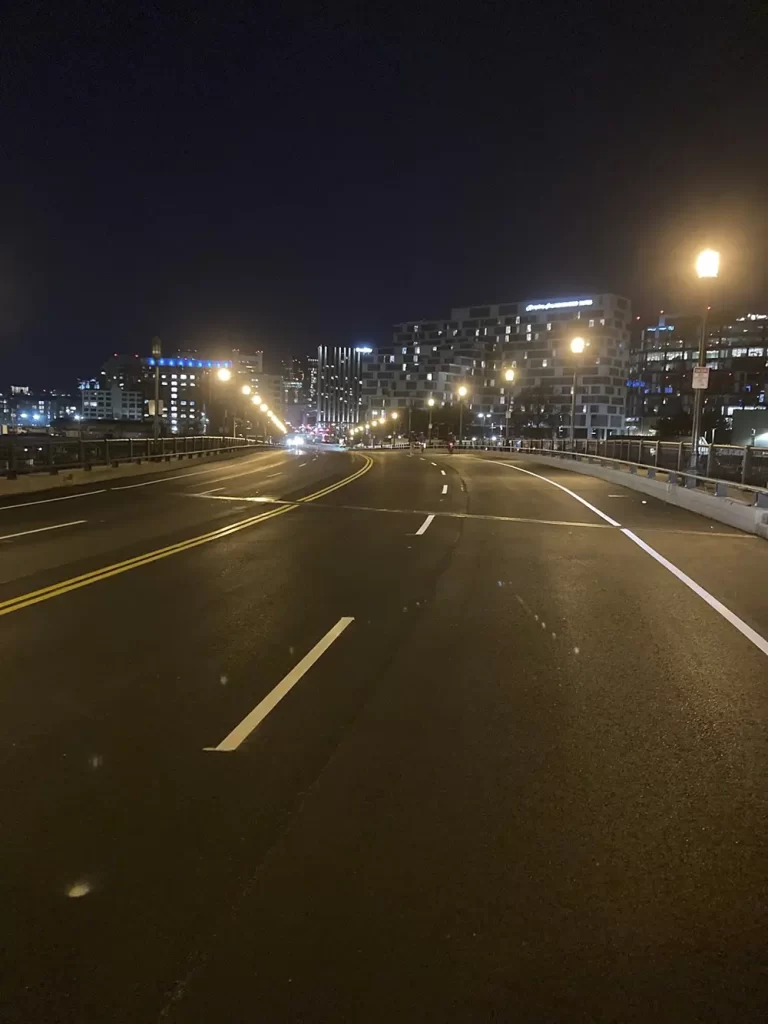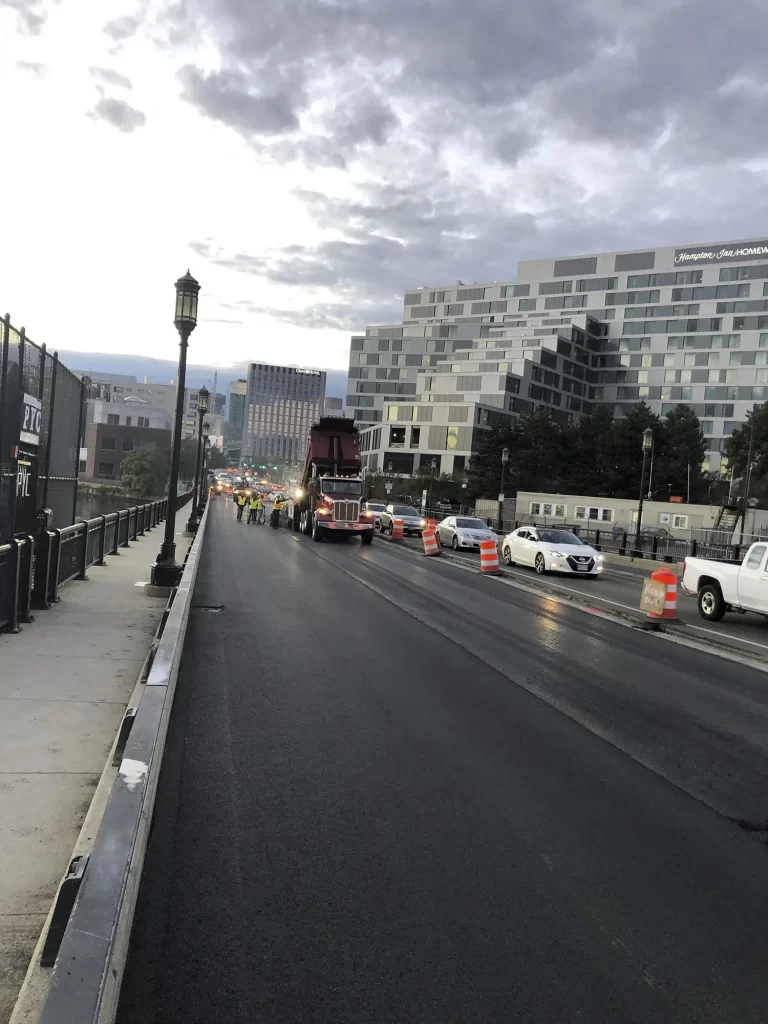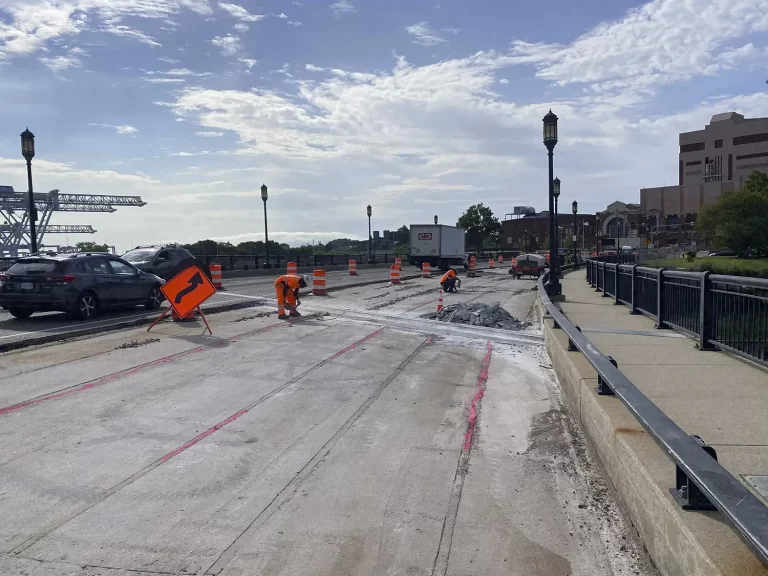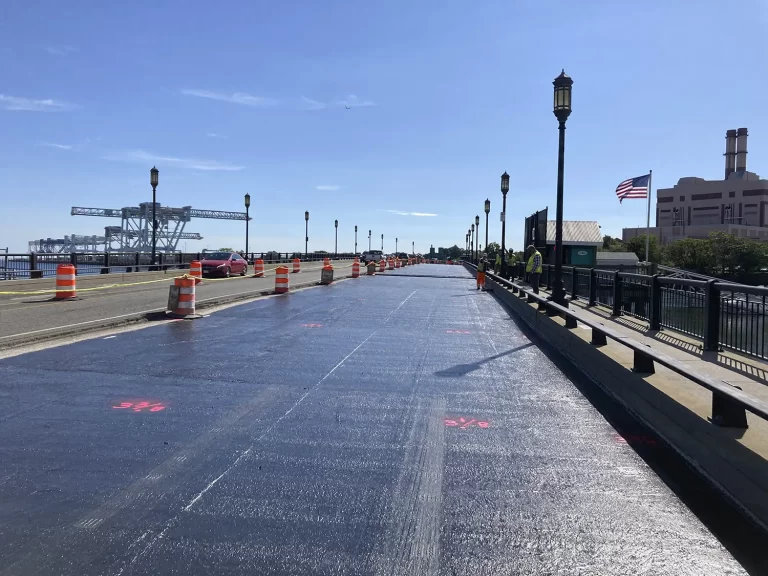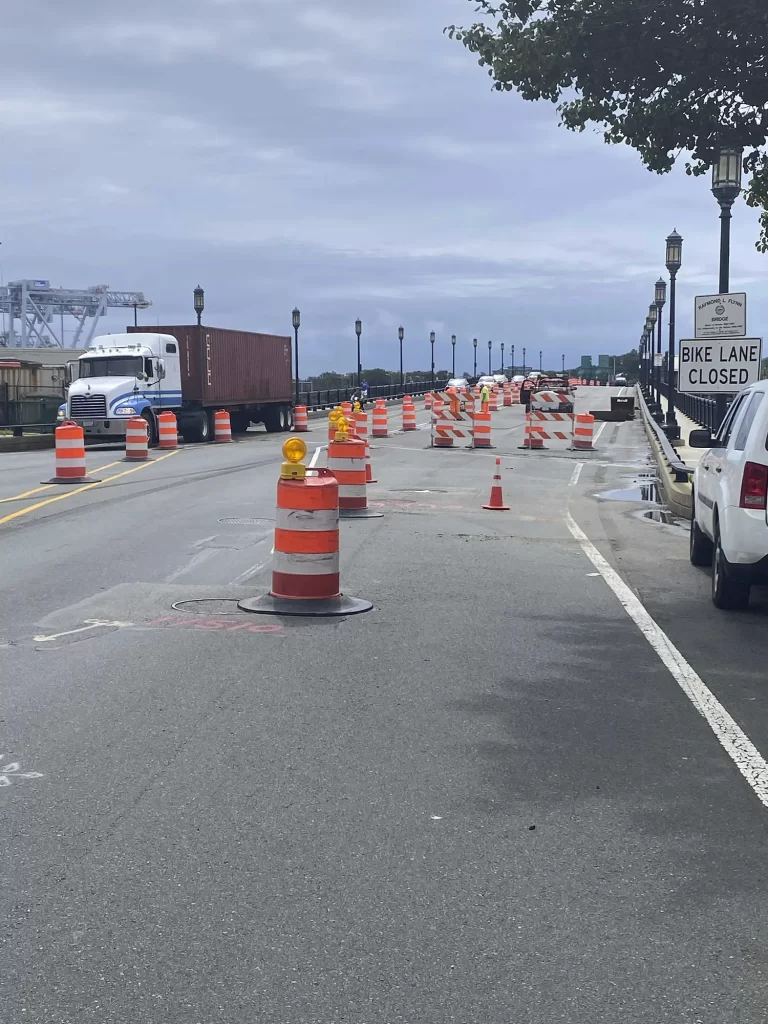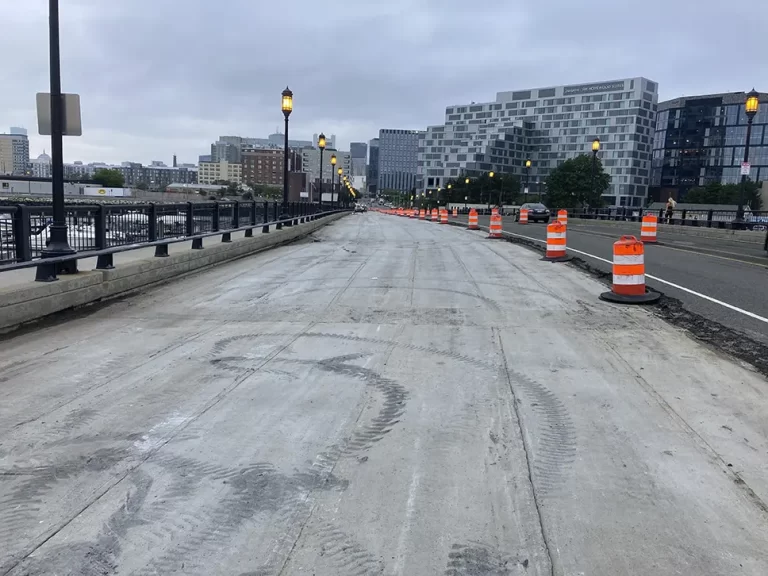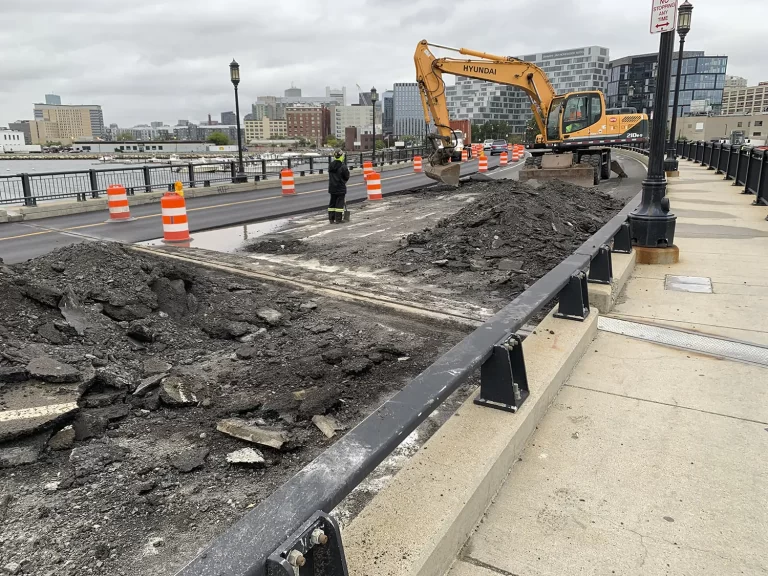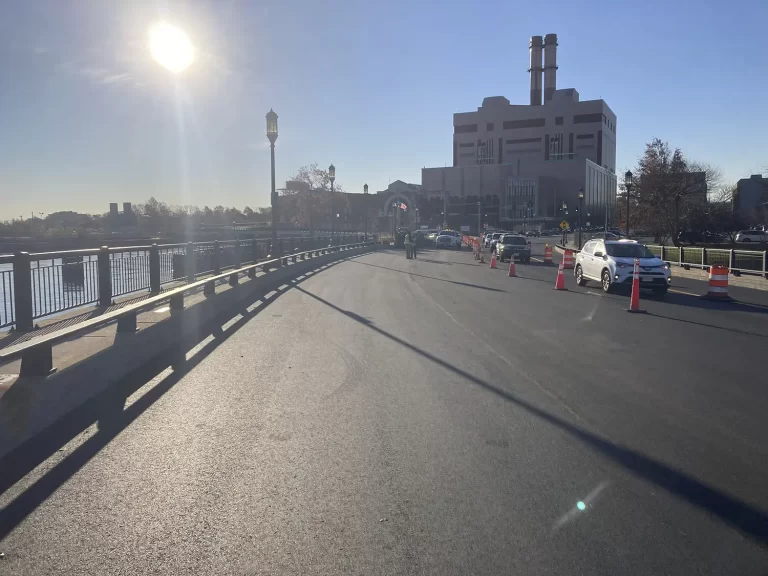City of Boston State of Good Repair
Project Overview
Project Overview:
The intent of the contract was to identify the condition City of Bridges and raise the condition ratings of the bridge components. For example, if the substructure elements of a bridge were rated much lower than the deck elements in the latest inspection report then a repair method would be determined and executed to raise the substructure elements rating. To highlight a specific project, the wearing surface of the Summer St bridge over Reserved Channel in South Boston deteriorating due to the high volume of truck traffic turning into the Conley Terminal. The initial repair only called to repave 2’ on either side of the bridge joints (18 piers and joints), by the time the project started the scope of work was to resurface the entire 1000’ long bridge with a polymer modified superpave mix in two phases to maintain traffic flow in both directions. In addition, SPS completed thousands of linear feet of shear key replacement and sidewalk, utility cover, approach & backwall, and bridge railing repairs.
Key Challenges Overcome:
The two major challenges during the Summer St Over Reserved Channel project were the membrane removal and new pavement placement. The project started in June 2021 and during the membrane removal the temperatures during the day were in the 90s causing the rubber membrane to be soft and sticky. The project moved to nights in order to complete the work productively, but the Phase 1 membrane removal took almost 20 shifts to complete. New pavement placement was also a challenge, the repair plans called to place two 1.5” layers of superpave but during removal of the existing wearing surface began it was discovered that the existing asphalt thickness in the center of each span ranged from 2-1/2” to 3-1/2” thick while the asphalt around each joint ranged from 5” to 6-1/2” thick. The box beams were also not level, two box beams next to each other could have a 2” difference in elevation. Survey was completed at four locations across the phase and every 20’ along the bridge at the existing wearing surface level and top of box beam elevation level in order to determine how much asphalt needed to be placed as elevations changed in both directions. The engineers were also concerned that putting that amount of asphalt back would exceed the bridge’s load capacity, this did not end up being a concern. A tremendous amount of planning between the paving subcontractor, SPS, the City, and their consultants occurred in order to pave with the proper thicknesses given the changing elevations in the bridge beams and joint.

